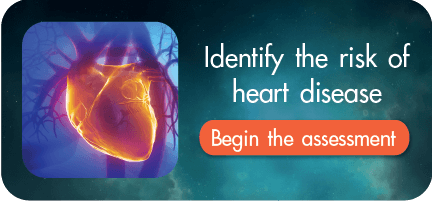Chest Pain: A Complaint That Shouldn’t Be Ignored
HIGHLIGHTS:
- Chest pain could be caused by numerous factors, but the most dangerous are a heart attack or an acute myocardial infarction.
- If you experience continuous tightness in the chest for over 20 minutes, there is a chance that you are experiencing an acute myocardial infarction for which you should seek immediate medical attention.
If someone says they are experiencing chest pain, the first thing people tend to think of is a cardiovascular condition. But how many of these people will think about this pain as actually pointing to a heart problem that should require immediate transfer to a hospital for medical attention? What about the times when teenagers complain of chest pain when exercising? Or what about those who insist that they have a pain in their chest after an argument with their partner? Are these really symptoms of a heart problem? And should these people also be transferred to an accident or emergency department?
To be certain, we first need to get to know more about the specific symptoms involved with cardiovascular conditions, so that we can be confident about which symptoms should necessitate medical treatment.
Possible causes of chest pain
Chest pain can have numerous causes, but the most frightening of those are surely heart attacks or myocardial infarctions as these can be fatal. A heart attack or myocardial infarction will have the following symptoms:
- There may be a tightness in the chest that feels as if there is something extremely heavy being pushed against the center of the chest, underneath the surface of the skin.
- There are usually shooting pains in other areas too, such as the shoulders, arms or jaw, while the pain may only affect one side of the body or both sides at the same time.
- Some patients may not feel extreme pain in their chest, but they feel a stabbing pain underneath their sternum instead, with these patients not having a history of stomach conditions.
- When expending energy, such as standing up, the pain may become increasingly intense, and then gradually abates again after sitting back down.
- The patient may experience profuse sweating all over the body.
- The patient may experience nausea, faintness, heart palpitations and breathlessness, even when sitting down, which would make standing back up difficult.
If these symptoms persist for a period of more than 20 consecutive minutes, it could be due to a heart attack. That person should seek medical attention immediately.
Other conditions that also cause chest pain
1. Pneumothorax: Patients suffering from this condition may also feel a tightness in the chest, but this tightness is usually obvious in affecting either the left or right side of the chest. Another symptom is a constantly decreasing breathing volume that gets worse over time. This condition requires immediate medical attention as well, since it can lead to respiratory failure.
2. GERD (gastroesophageal reflux disease): Patients with this condition may feel a burning sensation from the bottom of the sternum up to the center of the chest. For some patients, this burning can also be felt in the throat. When sufferers eat too much or lay down after eating a meal, the symptoms tend to flare up and they may feel breathless as well. However, the symptoms may be relieved somewhat when walking around. The symptoms may go away completely once appropriate medication has been taken. GERD is a non-fatal condition, but due to the symptoms being so similar to those of a heart attack, sufferers should visit their doctors to undergo an assessment to diagnose and plan treatment for the condition.
3. Costochondritis: This condition causes pain in the chest that may affect either the right- or left-hand side. Costochondritis also tends to include shooting, stabbing pains affecting the walls of the chest. It is usually obvious where the pain is coming from, and the symptoms often occur when the patient changes position. Some patients experience extreme pain when breathing, due to the movements of the rib cage. When sitting down to rest, the symptoms are usually relieved. If there is only a short period of chest pain which improves after five or so minutes, no medical treatment is necessary. However, if the pain lasts for 20 minutes or more without relief, it is necessary to visit a doctor for an accurate diagnosis.
4. Pulmonary embolism: Some refer to this condition as the “economy class syndrome”, owing to the fact that it tends to affect those who travel great distances without moving from their seat for hours at a time. Dehydration also plays a part in causing pulmonary embolisms, as it causes the blood to thicken and a blood clot to form in a leg. This blood clot is then transported to the patient’s lungs, causing the patient to feel exhausted, experience difficulty breathing and suffer chest pain similar to that which occurs during a heart attack. However, while this pain doesn’t spread to other parts of the body, in extreme cases the condition can be fatal.
5. Hyperventilation syndrome: A syndrome that causes patients to breathe erratically, hyperventilation syndrome is linked to a patient’s mental state. As the patient breathes faster, it causes acid abnormalities in the bloodstream, which then leads to tightness in the chest, breathing difficulty and a feeling of spasm or numbness throughout the body. The more the patient tries to correct the breathing by taking an increasing number of breaths, the worse the condition becomes. This condition commonly affects teenagers who are going through periods of stress and pressure. First aid can be administered by advising patients to lay still on the floor, relax and breathe as slowly as they normally would. The symptoms should then improve after around 5–10 minutes. However, if they do not get any better, the patient should be transferred to hospital to receive the appropriate treatment.
Complete a risk assessment for genetic conditions at:
Reference Heart
Related
articles
